Granada is a city in southern Spain that is home to a wide variety of birds. From the majestic golden eagles to the colorful bee-eaters, the skies of Granada are filled with avian life.
Many of the birds in Granada are migratory, and their presence is a reminder that the city is part of a larger ecosystem.
Birdwatching is a popular activity in Granada, and many of the city’s parks and green spaces provide excellent opportunities for birders to observe these creatures. From the majestic eagles to the delicate warblers, Granada has something for everyone when it comes to birds.
1. Golden Eagle
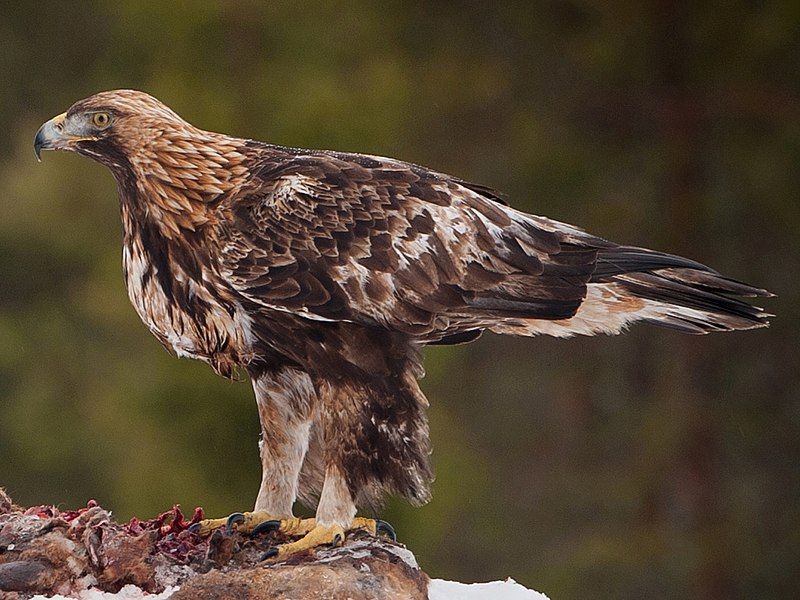
The golden eagle is an impressive bird of prey found inhabiting the Northern Hemisphere. It is quite widespread, living in a variety of habitats ranging from deserts and mountains to open forests and grasslands.
They are part of the Accipitridae family, which includes other large birds of prey such as hawks, kites, and harriers. Golden eagles are known for their incredible speed, with some being able to reach speeds of up to 200 mph during a dive.
They have a distinctive brownish-gold head and neck, and their wingspan can measure up to 7 feet wide. They primarily feed on smaller animals such as rabbits, hares, and rodents, though they have been known to take down larger animals like young deer and sheep.
With their sharp eyesight and an impressive wingspan, golden eagles have become one of the most recognizable birds of prey in the Northern Hemisphere.
| Kingdom | Animalia |
| Phylum | Chordata |
| Class | Aves |
| Order | Accipitriformes |
| Family | Accipitridae |
| Genus | Aquila |
| Species | A. chrysaetos |
2. White-headed Duck
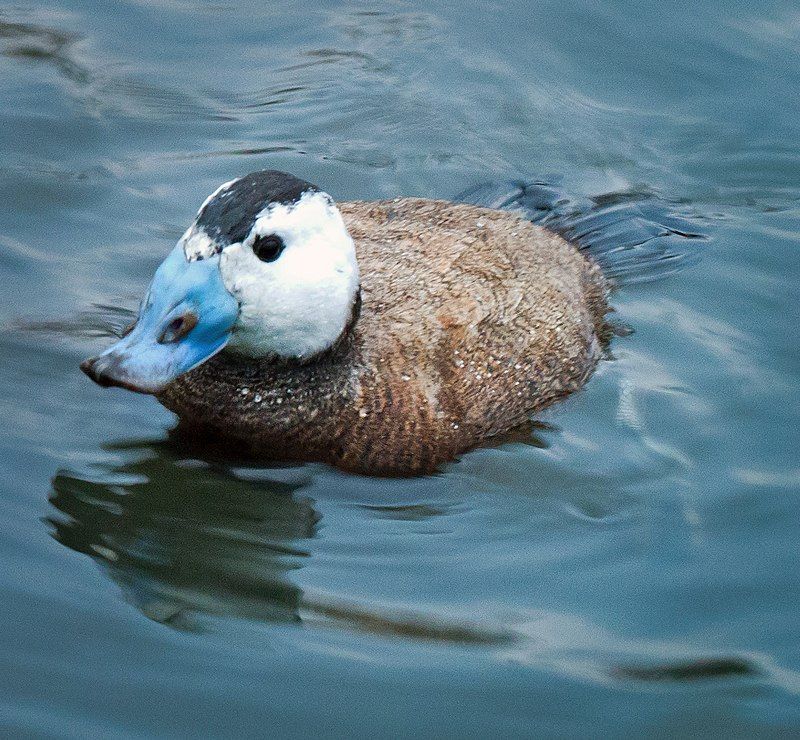
The white-headed duck is a small diving duck that measures approximately 45 cm long. It is easily distinguished by the male having a white head, a black crown, a blue bill, and reddish-grey plumage. The female has a dark bill and a duller coloration.
This species of duck prefers to inhabit lakes with open water and dense vegetation along the margins. This vegetation provides a safe space for the duck to hide from predators, as well as providing a source of food and a place to nest.
The vegetation also provides protection for the duck’s eggs and young. The white-headed duck is a unique species that has adapted to thrive in these aquatic habitats.
| Kingdom | Animalia |
| Phylum | Chordata |
| Class | Aves |
| Order | Anseriformes |
| Family | Anatidae |
| Genus | Oxyura |
| Species | O. leucocephala |
3. Rock Sparrow
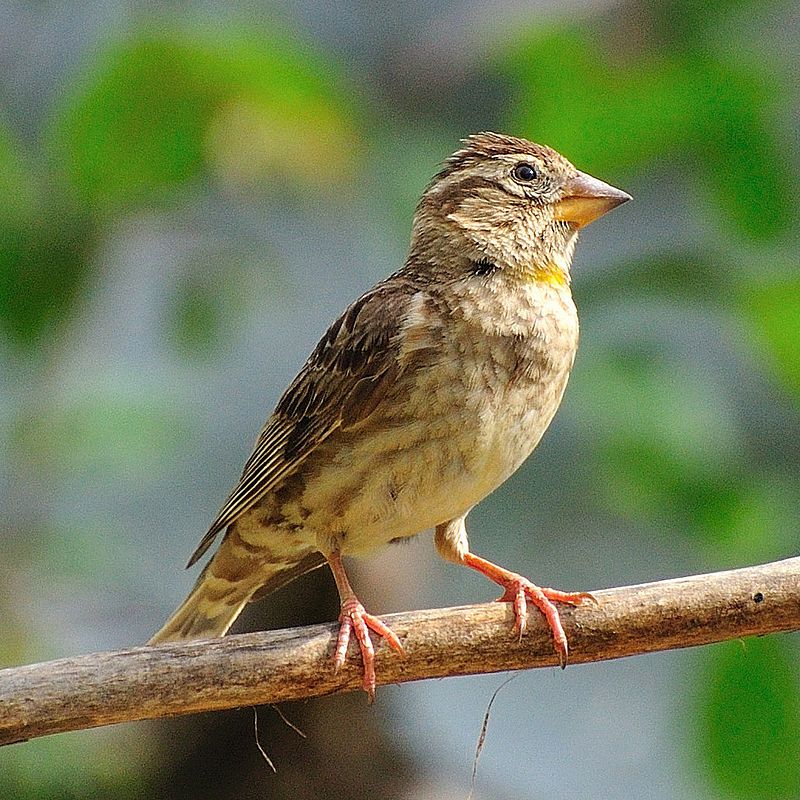
The rock sparrow, also known as the rock petronia, is a species of small passerine bird belonging to the sparrow family Passeridae. It is the only member of the genus Petronia and is found in a wide range of habitats in both Europe and Asia.
The rock sparrow breeds on barren, rocky hills in Iberia, North Africa, Southern Europe, Siberia, North China, and Central China. These birds are ground-dwellers, preferring to nest in rock crevices and cavities and to feed on the ground for insects, seeds, and grains.
They typically form large flocks of up to several hundred individuals during the winter season. The rock sparrow is considered a species of least concern by the International Union for Conservation of Nature (IUCN).
| Kingdom | Animalia |
| Phylum | Chordata |
| Class | Aves |
| Order | Passeriformes |
| Family | Passeridae |
| Genus | Petronia |
| Species | P. petronia |
4. Greater Flamingo
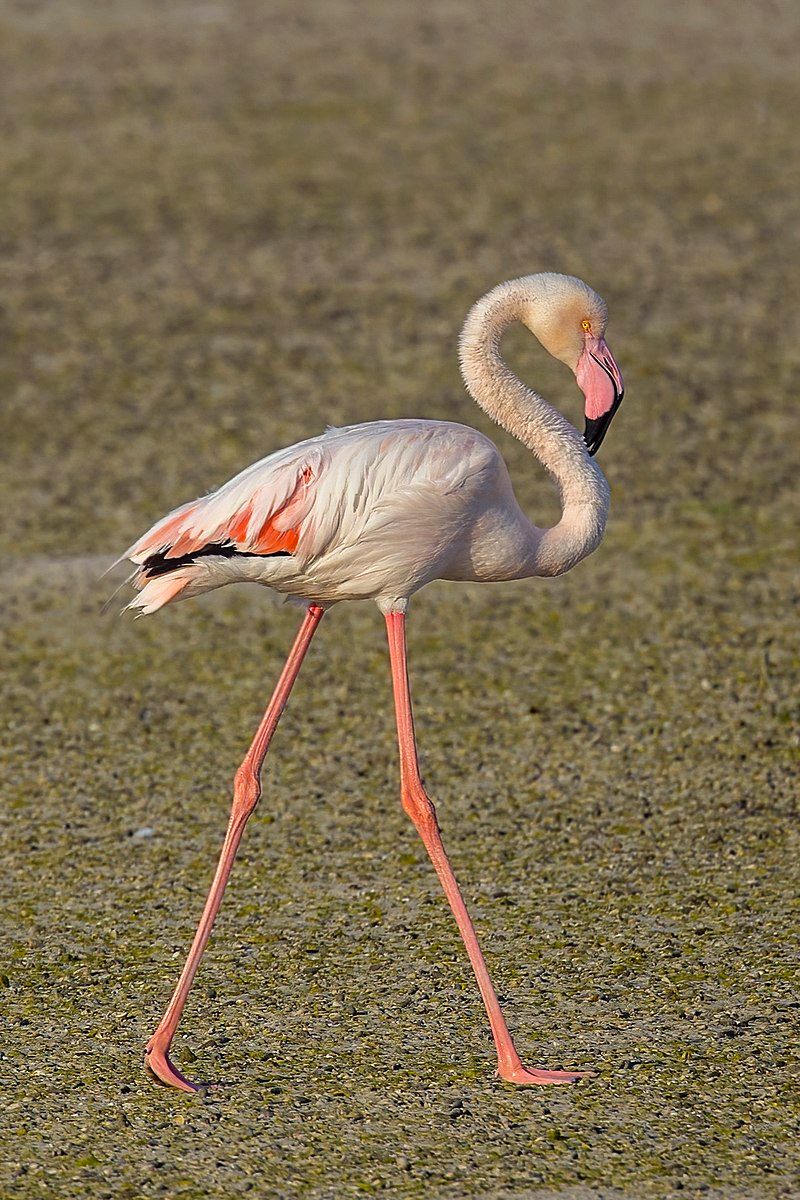
The greater flamingo is the most widespread and largest species of the flamingo family and is found in many parts of the world.
They are common in the Old World, with large populations inhabiting Northern and Sub-Saharan Africa, the Indian Subcontinent, the Middle East, the Levant, the Persian Gulf, the Gulf of Aden, the Red Sea, and the Mediterranean countries of Southern Europe.
The greater flamingo is a unique species, with its long legs, curved neck, and bright pink plumage. It is known to inhabit shallow lakes, lagoons, mudflats, and estuaries, where it feeds on plankton, mollusks, and crustaceans.
They typically form huge flocks of thousands of individuals, and can often be seen roosting in shallow waters. The greater flamingo is an important species in the ecosystem, playing a critical role in the food chain.
It is also an important symbol of beauty and grace, with its colorful feathers and elegant stance. Unfortunately, due to human activity, their numbers have been declining in many parts of the world.
It is important to take steps to protect this iconic species so that future generations can enjoy its beauty.
| Kingdom | Animalia |
| Phylum | Chordata |
| Class | Aves |
| Order | Phoenicopteriformes |
| Family | Phoenicopteridae |
| Genus | Phoenicopterus |
| Species | P. roseus |
5. Red-crested Pochard
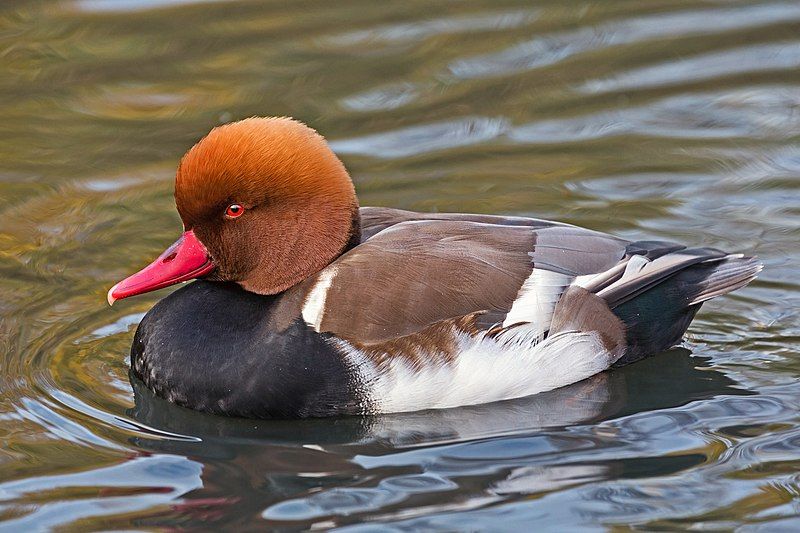
The red-crested pochard is a large species of duck that is found around the world. It is named for its distinctive red crest, which is usually visible on the head of the bird. The scientific name for the red-crested pochard is derived from two languages, Greek and Latin.
The Greek word Netta means “duck” while the Latin word rufina means “golden-red”. This is an apt description of the bird’s physical features, as the red crest stands out in stark contrast against its otherwise dark body and wings.
The red-crested pochard is an omnivore, meaning it feeds on both plants and animals. It usually feeds on small invertebrates, such as insects and crustaceans, as well as aquatic vegetation. It is a strong swimmer and often dives underwater to forage for food.
The red-crested pochard is also a seasonal migratory bird, traveling from its breeding grounds in the warmer months to its wintering grounds in the colder regions.
| Kingdom | Animalia |
| Phylum | Chordata |
| Class | Aves |
| Order | Anseriformes |
| Family | Anatidae |
| Genus | Netta |
| Species | N. rufina |
6. Red-rumped Swallow
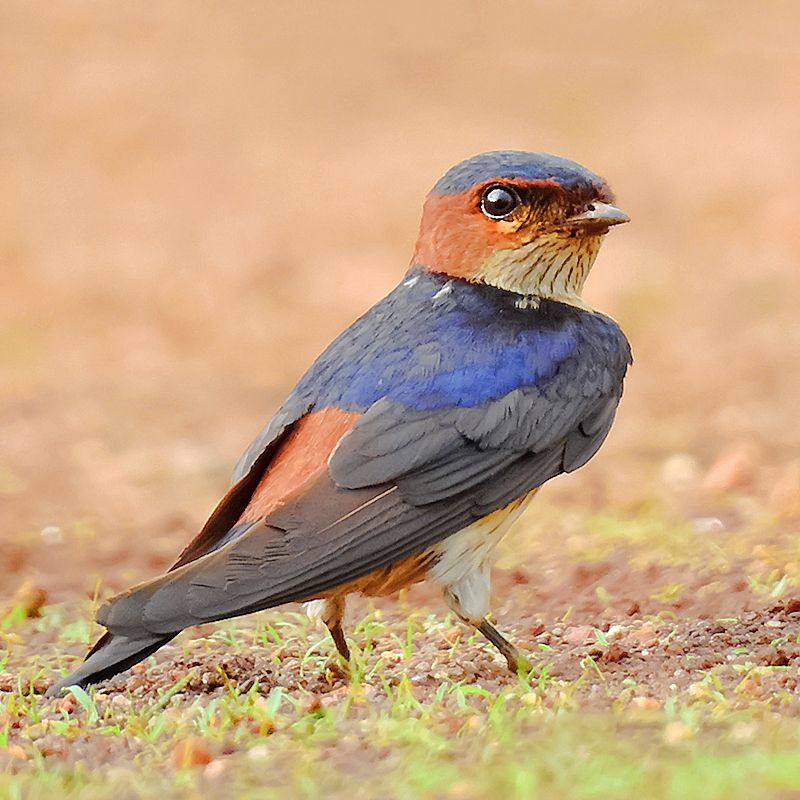
The red-rumped swallow is a small passerine bird that is a part of the swallow family. They are found in a variety of climates and regions, ranging from temperate southern Europe and Asia, including Portugal, Spain, Japan, India, Sri Lanka, and tropical Africa.
These birds have two distinct habits, depending on their location.
The Indian and African birds are resident, meaning they remain in the same area without migrating, while European and other Asian birds are migratory, meaning they fly to different regions during different seasons.
This migration is likely in response to changes in temperatures and food availability. The environment these birds inhabit has to be open and hilly, as this is where they typically build their nests.
Overall, the red-rumped swallow is a species that is found in many different regions and is adapted to a variety of climates.
| Kingdom | Animalia |
| Phylum | Chordata |
| Class | Aves |
| Order | Passeriformes |
| Family | Hirundinidae |
| Genus | Cecropis |
| Species | C. daurica |
7. Black-bellied Sandgrouse
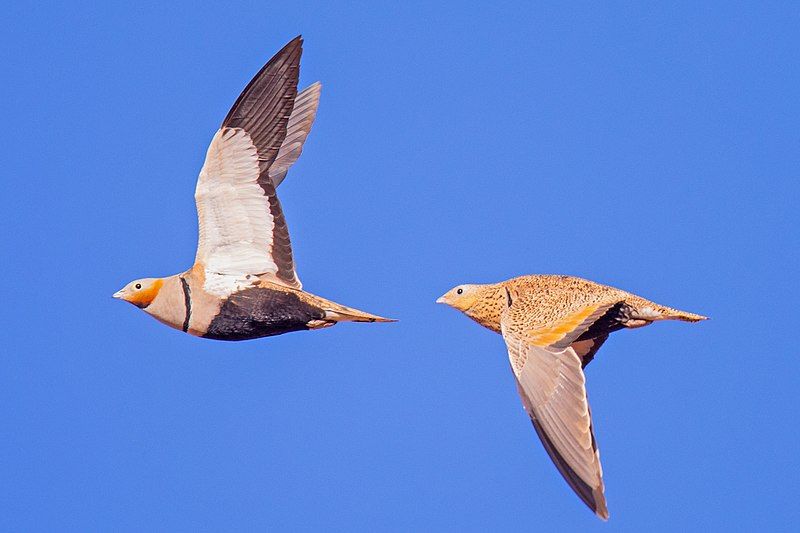
The black-bellied sandgrouse is a type of bird belonging to the sandgrouse family. This species has two distinct races, the nominate race and the eastern form P. o. arenarius.
The nominate race of black-bellied sandgrouse is known to breed in places such as Iberia, northwest Africa, the Canary Islands, Turkey, Iran, Cyprus, and Israel. On the other hand, the eastern form P. o.
Irenaeus of this species breeds in Kazakhstan, western China, and northern Pakistan. The black-bellied sandgrouse is a medium-large bird and is found in a variety of habitats such as deserts, semi-deserts, and steppes. It typically feeds on grasses, herbs, and seeds.
It is also known to use its strong legs and claws to scratch for food in the ground.
The black-bellied sandgrouse is an important species within its range, as it helps to disperse the seeds of the plants it feeds upon, thereby aiding in the regeneration of vegetation and the overall health of the environment.
| Kingdom | Animalia |
| Phylum | Chordata |
| Class | Aves |
| Order | Pterocliformes |
| Family | Pteroclidae |
| Genus | Pterocles |
| Species | P. orientalis |
8. Little Bustard
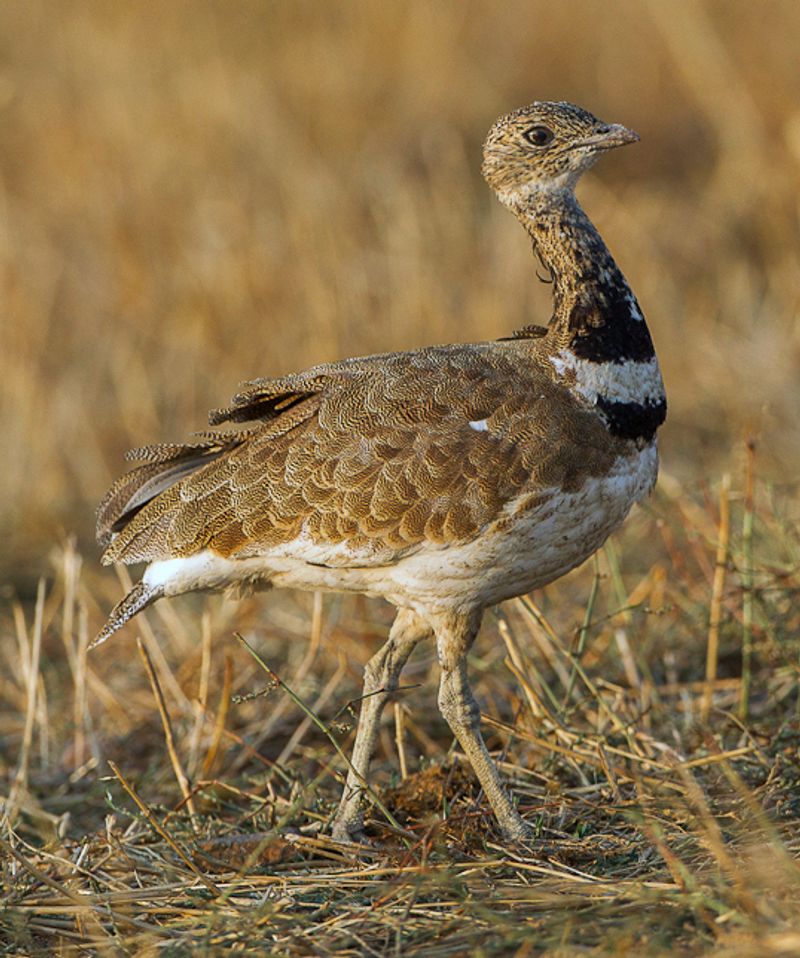
The little bustard is a species of bird belonging to the bustard family. It is the only species in its genus, Tetrax.
The genus name is derived from the Ancient Greek language and is associated with a gamebird mentioned by the Greek poet and playwright Aristophanes and other classical authors.
The little bustard is a large, ground-dwelling bird that inhabits open landscapes in parts of Europe, Asia, and Africa. It is mainly gray in color, with a blackish back, and can reach up to 60 centimeters in length.
It feeds on a variety of small animals, such as insects, worms, and small mammals, as well as seeds and berries. During the breeding season, males engage in elaborate courtship displays, strutting and showing off their colorful plumage.
The little bustard is classified as Vulnerable on the International Union for Conservation of Nature’s (IUCN’s) Red List of threatened species, due to habitat destruction and other human activities.
Conservation efforts are underway in some areas to protect this species and its habitats.
| Kingdom | Animalia |
| Phylum | Chordata |
| Class | Aves |
| Order | Otidiformes |
| Family | Otididae |
| Genus | Tetrax |
| Species | T. tetrax |
9. Cuckoos
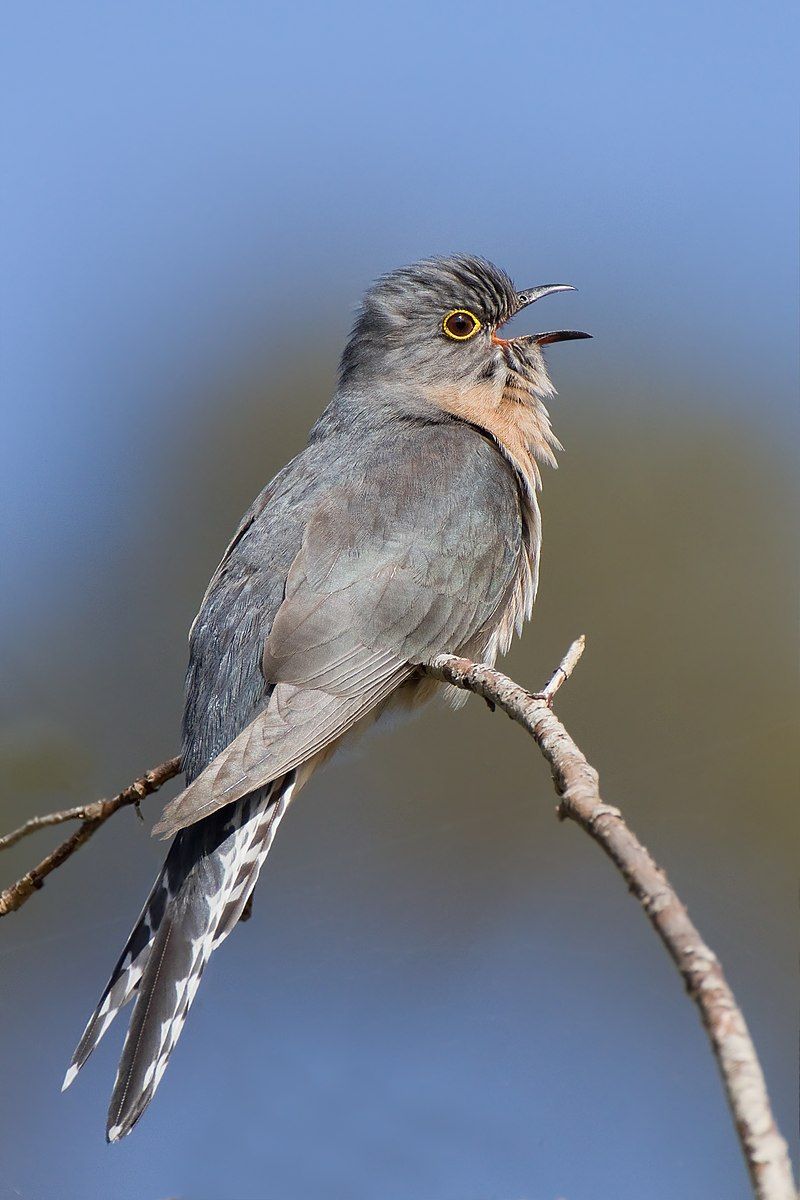
Cuckoos are a family of birds that belong to the Cuculidae family, the sole taxon in the order Cuculiformes. This family of birds is quite diverse and includes the common or European cuckoo, roadrunners, koels, malkohas, couas, coucals, and anis.
The coucals and anis are sometimes classified as separate families, known as the Centropodidae and Crotophagidae, respectively. Cuckoos are known for their distinctive call, which is used to mark their territory and attract mates.
They are also known for their habit of laying their eggs in other species’ nests, a behavior known as ‘brood parasitism’. Cuckoos are found in many parts of the world but are most abundant in tropical and subtropical regions.
They feed on a variety of insects, spiders, and other small animals.
| Kingdom | Animalia |
| Phylum | Chordata |
| Class | Aves |
| Clade | Otidimorphae |
| Order | Cuculiformes |
| Family | Cuculidae |
10. Black-winged Stilt
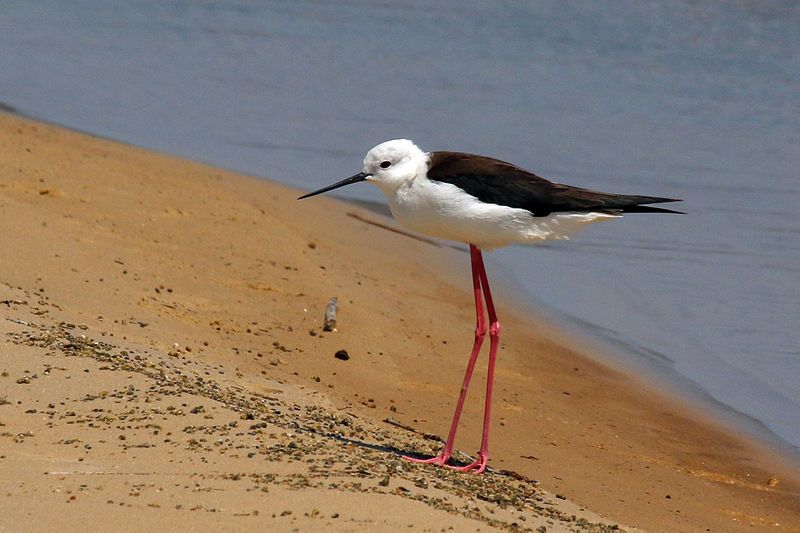
The black-winged stilt is a type of wading bird, belonging to the avocet and stilt family. It is a widely distributed species, found across many regions of the world. It is a long-legged bird, with a scientific name of H. himantopus.
This species is mostly a single, cosmopolitan species, meaning it is found almost everywhere. The black-winged stilt is a common sight in wetlands and shallow water, usually in flocks of two to twelve individuals.
The long legs of this bird allow it to wade in deeper water than most other wading birds. It feeds mainly on aquatic invertebrates, such as insects, larvae, worms, and mollusks.
The black-winged stilt is a graceful and elegant bird, with a unique look that makes it easily recognizable.
| Kingdom | Animalia |
| Phylum | Chordata |
| Class | Aves |
| Order | Charadriiformes |
| Family | Recurvirostridae |
| Genus | Himantopus |
| Species | H. himantopus |
11. Pallid Swift
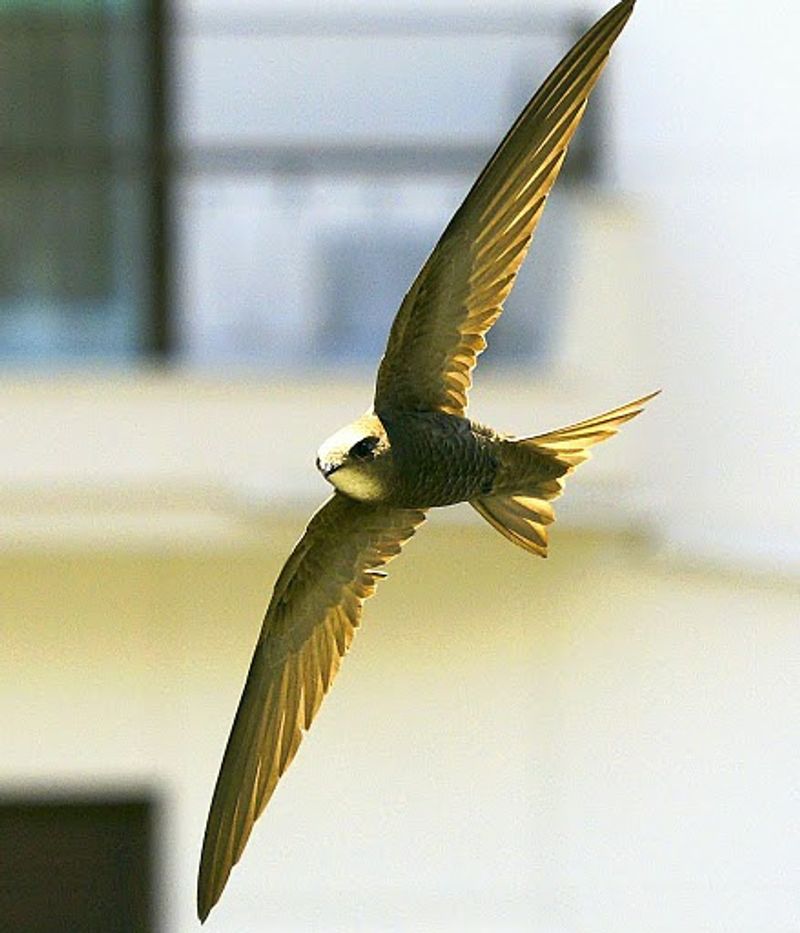
The pallid swift is a species of swift, which is a type of bird characterized by its short legs and its tendency to cling to vertical surfaces. Its genus Apus is derived from Latin, meaning “swift”, and its species name Pallidus is Latin for “pale”.
The pallid swift is unique in that it never voluntarily settles on the ground, unlike other species of swift. This behavior is attributed to the swift’s short legs, which are not well-suited for perching on the ground.
Additionally, swifts are known to prefer vertical surfaces, such as cliffs and trees, where they can hang upside down and use their feet to cling to the surfaces.
This behavior is common among most swifts, however, the pallid swift is unique in that its feathers are a pale shade of gray, rather than the typical black or brown colors of other swift species. This makes the pallid swift easily distinguished from its counterparts.
| Kingdom | Animalia |
| Phylum | Chordata |
| Class | Aves |
| Clade | Strisores |
| Order | Apodiformes |
| Family | Apodidae |
| Genus | Apus |
| Species | A. pallidus |
12. Pectoral Sandpiper
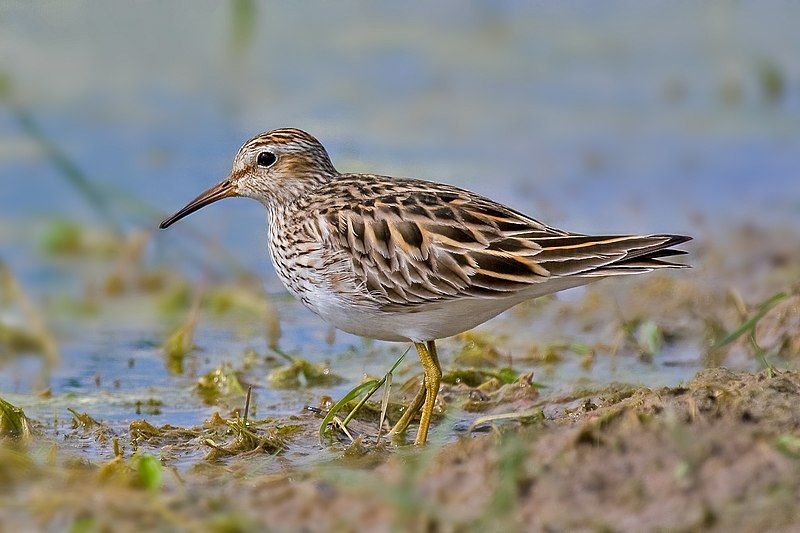
The pectoral sandpiper is a small wader that is found in both North America and Asia during the breeding season. It migrates to South America and Oceania during the winter months. This species feeds on small invertebrates, such as insects or worms.
To protect its four eggs from the cool breezes of the breeding grounds, the pectoral sandpiper builds a nest that is a hole scraped in the ground. The nest is lined with thick vegetation to provide insulation and keep the eggs warm.
This species is able to survive in harsh climates due to its well-made nest.
| Kingdom | Animalia |
| Phylum | Chordata |
| Class | Aves |
| Order | Charadriiformes |
| Family | Scolopacidae |
| Genus | Calidris |
| Species | C. melanotos |
13. Ferruginous Duck
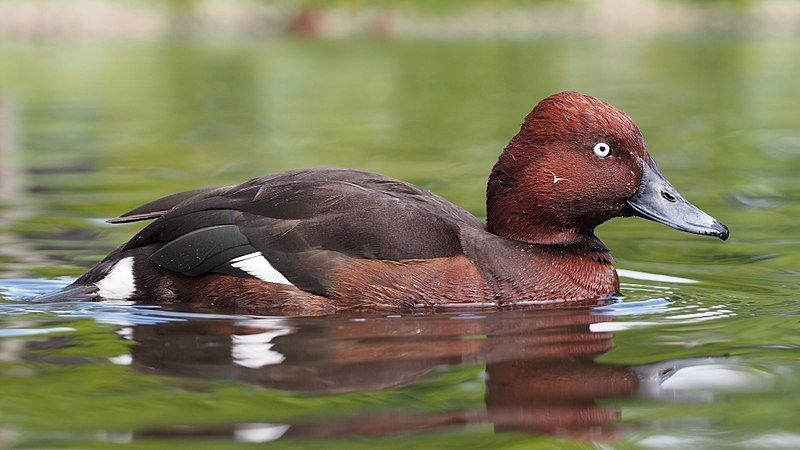
The Ferruginous Duck, also known as the Ferruginous Pochard, Common White-Eye or White-Eyed Pochard, is a medium-sized diving duck that can be found in the Eurasian region.
Its scientific name, Aythya nyroca, is derived from two words: Aithuia, an unidentified seabird mentioned in ancient texts such as Hesychius and Aristotle, and Nyrok, the Russian word for a duck.
This species is well-adapted to its environment and is known for its ability to dive to depths of around two meters in order to search for food. Its body is covered in a pale brown plumage with a distinctive white eye-ring and a rusty red head.
Its diet consists mainly of aquatic plants, mollusks, and small crustaceans. The Ferruginous Duck is an important species in the region, as it helps control the population of aquatic creatures and vegetation.
Its conservation status is currently listed as “least concern” by the IUCN, as it is not facing any major threats in the wild.
| Kingdom | Animalia |
| Phylum | Chordata |
| Class | Aves |
| Order | Anseriformes |
| Family | Anatidae |
| Genus | Aythya |
| Species | A. nyroca |
14. Common Pochard
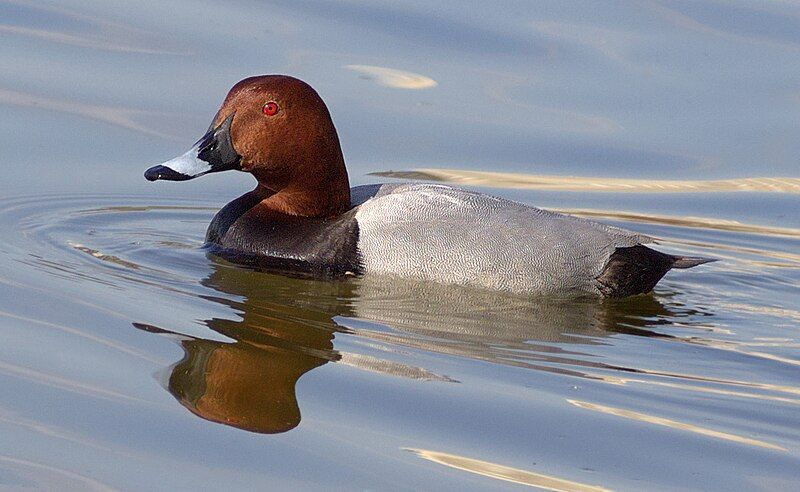
The common pochard is a type of duck that dives underwater in search of food. Its scientific name, Aythya ferina, is derived from two sources.
The first part of the name, Aythya, comes from Greek writings by authors such as Hesychius and Aristotle where it is mentioned as a type of unidentified seabird. The second part of the name, ferina, is derived from Latin.
It is composed of two words, for us, meaning “wild”, and “ina”, meaning game. This combination of words is used to signify the wild nature of the common pochard.
| Kingdom | Animalia |
| Phylum | Chordata |
| Class | Aves |
| Order | Anseriformes |
| Family | Anatidae |
| Genus | Aythya |
| Species | A. ferina |
15. Graylag Goose
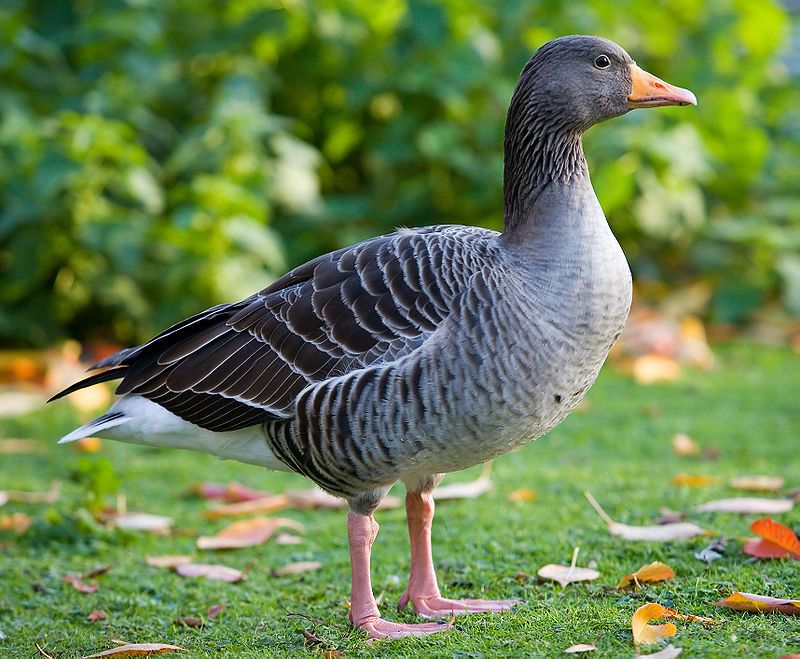
The greylag goose, also known as the graylag goose, is a species of large waterfowl belonging to the family Anatidae. It is the type species of the genus Anser and is easily identified by its mottled and barred grey and white plumage.
This species also has an orange beak and pink legs. The greylag goose is native to Europe, Asia, and parts of North Africa, and has been introduced to New Zealand and Australia as a game bird.
The species prefers wetlands and grasslands as its natural habitat, though it can also be found in cultivated areas. The diet of the greylag goose consists mainly of grasses, grains, and other vegetation.
It also eats small invertebrates and other small animals, such as insects and worms. The greylag goose is an important game bird in many countries and is also a popular subject of captive breeding.
It is also hunted for its meat and eggs, which are considered to be a delicacy in some areas.
| Kingdom | Animalia |
| Phylum | Chordata |
| Class | Aves |
| Order | Anseriformes |
| Family | Anatidae |
| Genus | Anser |
| Species | A. anser |
16. Golden Oriole
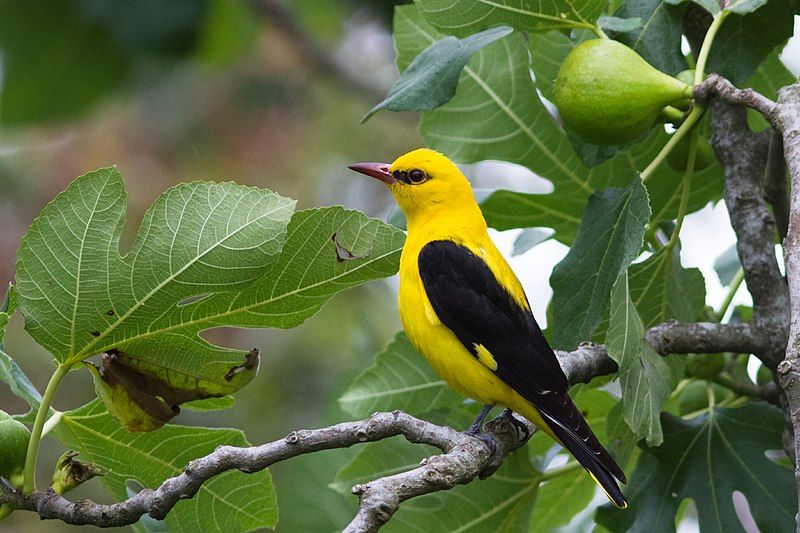
The Eurasian golden oriole, also known as the common golden oriole, is a passerine bird that is the only species in its family to breed in temperate regions of the Northern Hemisphere.
It is a summer migrant in Europe and the Palearctic, meaning that it migrates to these regions during the warmer months of the year before returning to its winter home in Central and Southern Africa.
This species is unique in that it is the only member of its family to travel such a long distance to escape the colder temperatures of the winter season.
The Eurasian golden oriole is also distinguished in its beauty, with its bright yellow plumage and black wings, tail, and head. Its diet consists of insects, berries, and fruits, which it forages for in the trees of its habitat.
This adaptable species is found in both open and wooded areas and is known for its distinct song.
| Kingdom | Animalia |
| Phylum | Chordata |
| Class | Aves |
| Order | Passeriformes |
| Family | Oriolidae |
| Genus | Oriolus |
| Species | O. oriolus |
17. Thekla Lark
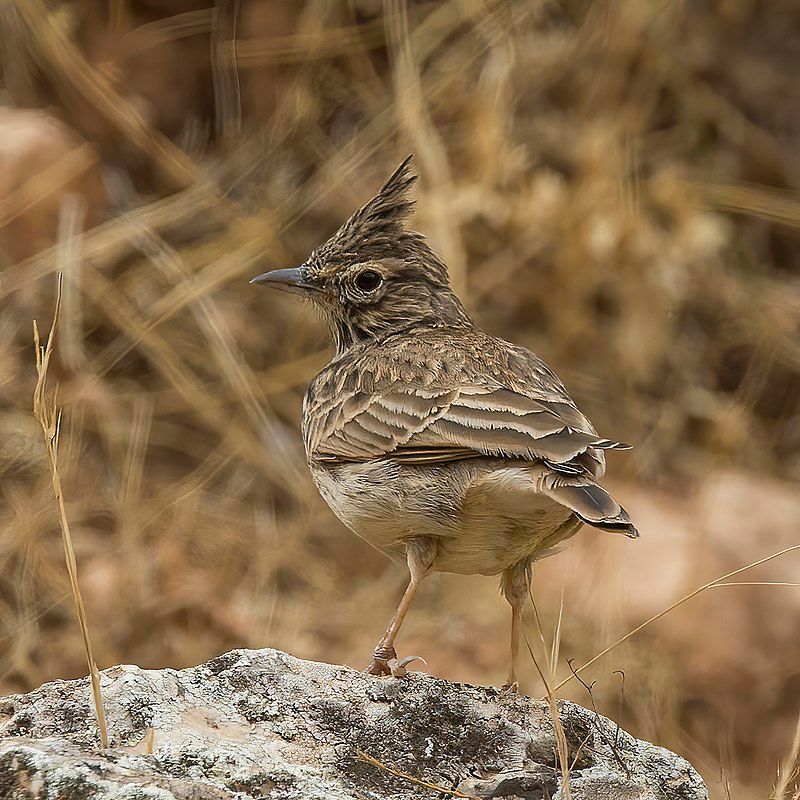
Thekla’s lark is a species of lark that is found in a variety of habitats across the Iberian Peninsula, northern Africa, and much of sub-Saharan Africa. It is a sedentary species, meaning it tends to stay in the same area for long periods of time.
This bird is most commonly found in dry, open habitats, such as grasslands and savannas, and is often found at higher altitudes.
Thekla’s lark is a fairly common species in the areas in which it lives, though its population numbers are largely unknown. This species is a medium-sized lark with a greyish-brown back, white underparts, and a black face mask.
Thekla’s lark has a fairly long tail, with white outer feathers. Its wings are also white, with black and white stripes on the flight feathers. Thekla’s lark feeds mainly on seeds and insects and is often seen in small flocks or alone.
During the breeding season, the female will build a nest in a shallow depression in the ground, which is lined with grass and feathers. Thekla’s lark is a species of conservation concern due to habitat loss and degradation.
It is listed as Near Threatened by the IUCN and is protected under the European Union’s Birds Directive. Conservation efforts focus on protecting and restoring grassland and savanna habitats, as well as reducing human disturbance in areas where the lark is found.
| Kingdom | Animalia |
| Phylum | Chordata |
| Class | Aves |
| Order | Passeriformes |
| Family | Alaudidae |
| Genus | Galerida |
| Species | G. theklae |
18. Red-legged Partridge
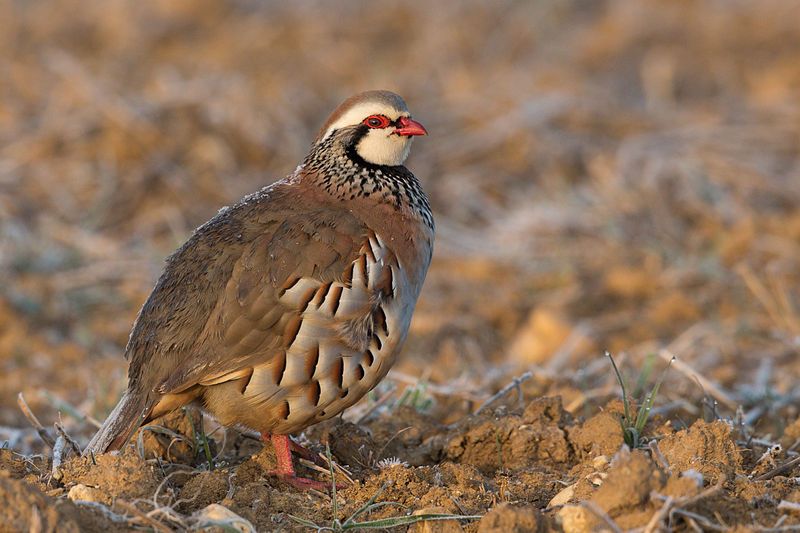
The red-legged partridge is a species of gamebird belonging to the Phasianidae family of birds. This family of birds is part of the order Galliformes, which is a taxonomic group of birds commonly referred to as gallinaceous birds.
This species of gamebird is sometimes referred to as the French partridge, to differentiate it from the English, or grey, partridge. The red-legged partridge is found throughout most of Europe and Western Asia.
It is a medium-sized gamebird, with a body length of around 30 cm and a wingspan of around 50 cm. It has a reddish-brown back, with a white throat and belly. The male has a black head, with a white collar, and a black barring on its wings.
The female is duller in color, with light barring on its wings. The red-legged partridge inhabits open areas with sparse vegetation, such as grasslands and agricultural fields. It feeds mainly on seeds and small insects.
Breeding typically takes place between April and July, with the female laying a clutch of up to 18 eggs. The eggs hatch after around three weeks and the young are ready to leave the nest after a further seven weeks.
The red-legged partridge has been extensively hunted for sport and for food throughout its range, and is still a popular target for hunters today. The species is not threatened, although numbers have declined due to habitat loss and overhunting in some areas.
Conservation efforts have been put in place to help protect the species and ensure that it remains a viable gamebird species for future generations.
| Kingdom | Animalia |
| Phylum | Chordata |
| Class | Aves |
| Order | Galliformes |
| Family | Phasianidae |
| Genus | Alectoris |
| Species | A. rufa |
19. Common Sandpiper
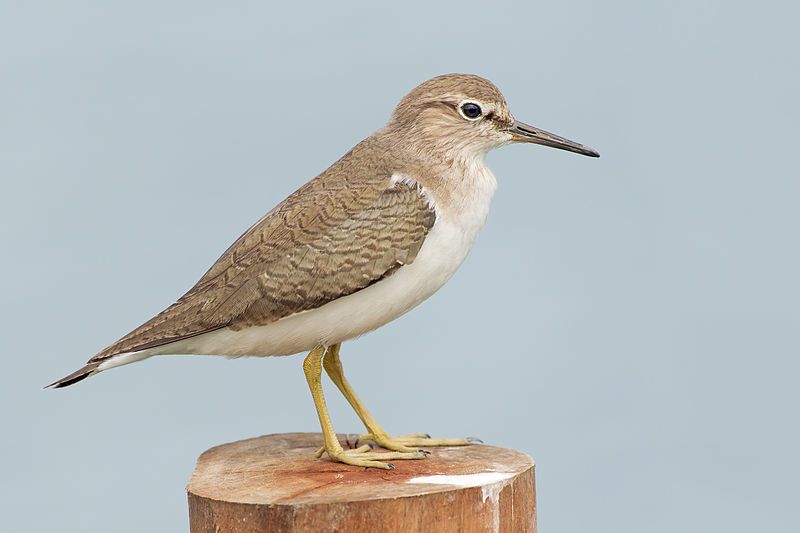
The common sandpiper is a small wading bird found in the Palearctic region. This species is part of the genus Actitis, which also includes the American spotted sandpiper. The two species of sandpiper share a large geographical range and often come into contact with one another.
This contact can lead to hybridization, in which individuals from one species mate with individuals from the other species, resulting in offspring with traits from both species.
This type of hybridization is known as parapatric hybridization, a process that can occur when two species share a similar range but do not completely overlap.
Stray individuals of either species may settle down with breeders of the other and hybridize, leading to the formation of hybrid offspring.
| Kingdom | Animalia |
| Phylum | Chordata |
| Class | Aves |
| Order | Charadriiformes |
| Family | Scolopacidae |
| Genus | Actitis |
| Species | A. hypoleucos |
20. Pin-tailed Sandgrouse
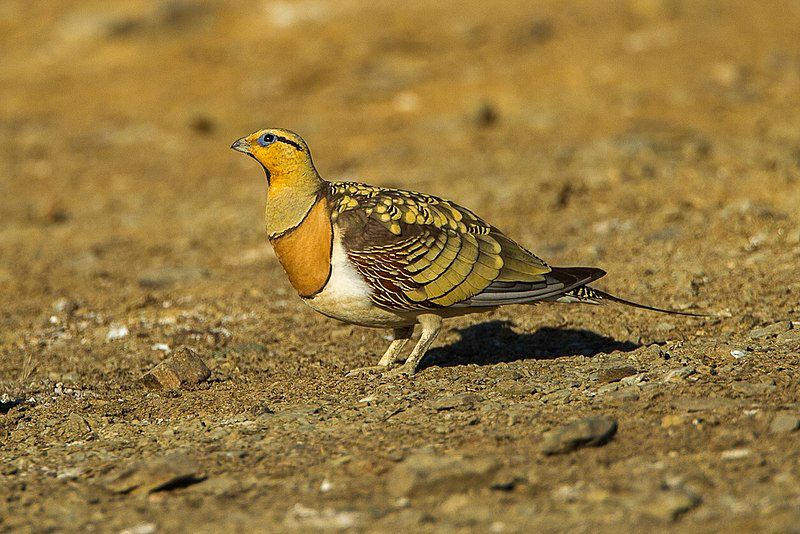
The pin-tailed sandgrouse is a species of bird belonging to the sandgrouse family, making it a medium-large size bird. The sandgrouse has a small, pigeon-like head and neck which contrast with a sturdy, compact body.
It has long, pointed wings that are white underneath, a distinctive long tail, and a fast, direct flight. In the wild, sandgrouse often travels in flocks, flying to watering holes at dawn.
The call of the sandgrouse is a loud distinctive sound, often described as “kattar-kattar.” The sandgrouse is a unique and interesting bird, and its appearance and behavior make it a fascinating species to observe.
| Kingdom | Animalia |
| Phylum | Chordata |
| Class | Aves |
| Order | Pterocliformes |
| Family | Pteroclidae |
| Genus | Pterocles |
| Species | P. alchata |
21. Red-knobbed Coot
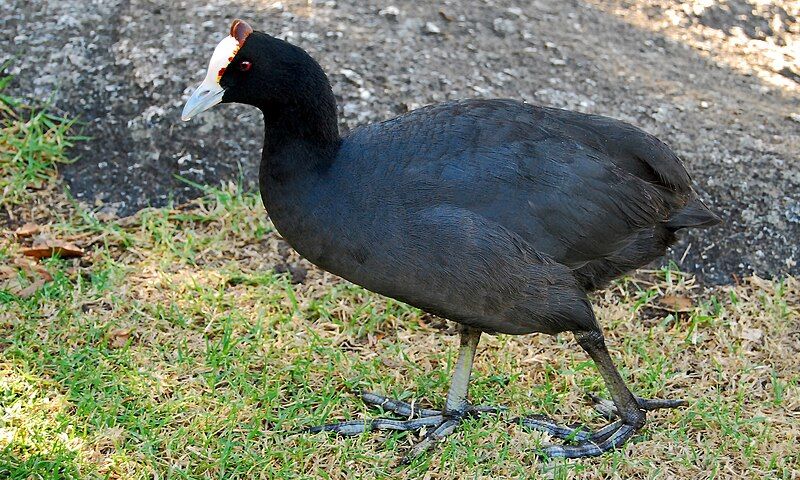
The red-knobbed coot, also known as the crested coot, is a species of bird belonging to the Rallidae family. It is a common resident of wetlands in Africa, from the Saharan desert in the north to South Africa in the south, and also in southernmost Spain.
The red-knobbed coot is a waterfowl that prefers freshwater lakes and ponds for nesting. It builds its nest from dead reeds close to the water’s edge, or sometimes even on the water itself. Its nest usually contains around 7 eggs.
The coot can be identified by its red knob on its forehead, which is more prominent in males than females. These birds are usually found in flocks and feed on aquatic vegetation, insects, molluscs, and even small amphibians.
The red-knobbed coot is able to swim very fast and dive into the water to catch its prey. They are also good fliers and are able to migrate to warmer climates during the colder months.
The red-knobbed coot is a widespread species, although its population is declining due to the destruction of wetlands and other human-induced factors. In some areas, conservation measures have been implemented to help protect this species.
| Kingdom | Animalia |
| Phylum | Chordata |
| Class | Aves |
| Order | Gruiformes |
| Family | Rallidae |
| Genus | Fulica |
| Species | F. cristata |
22. Red-necked Nightjar
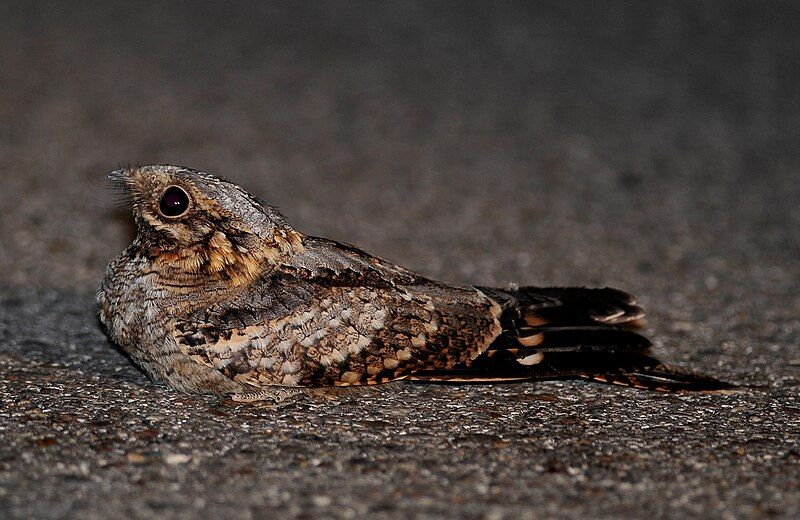
The red-necked nightjar is a species of bird found in Europe, Iberia, North Africa, and tropical West Africa. It is the largest of the nightjars in Europe, with a wingspan of over 40 cm.
It breeds in Iberia and North Africa during the summer months and then migrates to tropical West Africa for the winter. This species of nightjar is often found in open, dry habitats such as steppes and semi-arid regions.
During the day, the red-necked nightjar is usually seen perched on branches or low shrubs, and at night, it is often heard singing its distinctive song. This species of bird has a unique coloration, with a black-and-white pattern on its wings and a red patch on its neck.
It feeds mainly on insects, such as moths, beetles, and grasshoppers. It is an important part of the natural environment, helping to control insect populations and providing food for other birds.
| Kingdom | Animalia |
| Phylum | Chordata |
| Class | Aves |
| Clade | Strisores |
| Order | Caprimulgiformes |
| Family | Caprimulgidae |
| Genus | Caprimulgus |
| Species | C. ruficollis |
23. Garganey
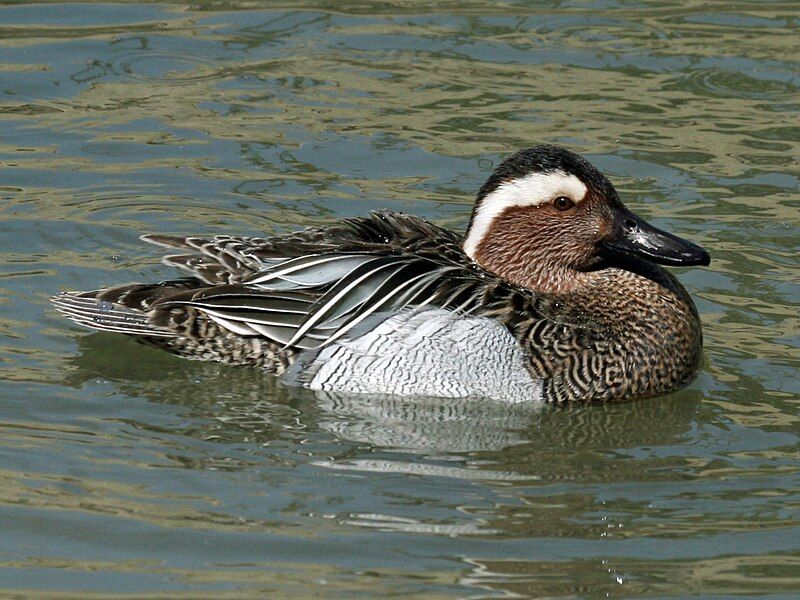
The garganey is a type of small duck that is native to many parts of Europe and across the Palearctic region. It is a migratory bird, meaning that it follows seasonal patterns of movement.
During the winter of the Northern Hemisphere, the entire population of garganey ducks will move to warmer climates in the south, such as southern Africa, India, Bangladesh, and Australasia.
Here they form large flocks, allowing them to take advantage of the abundant food sources in these areas. The garganey migrates back to its original habitats in the northern hemisphere when the winter ends, returning to Europe and the Palearctic region to breed.
| Kingdom | Animalia |
| Phylum | Chordata |
| Class | Aves |
| Order | Anseriformes |
| Family | Anatidae |
| Genus | Spatula |
| Species | S. querquedula |
24. Common Redshank
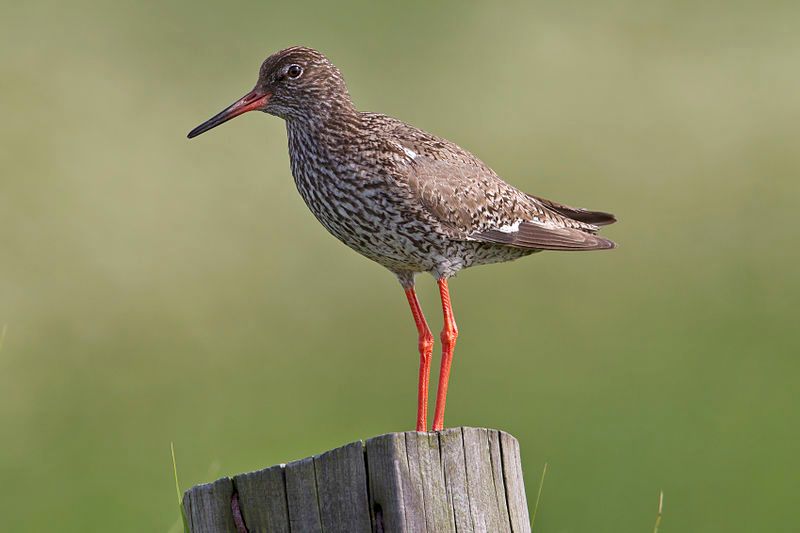
The Common Redshank, Tringa totanus, is a migratory bird species belonging to the large family of wading birds, the Scolopacidae. It is a medium-sized shorebird, measuring between 30 cm and 35 cm in length and weighing between 70g and 110g.
The upper parts of the bird are a mottled brownish-grey color, while the underparts are white. The bird has long red legs, which give it its name. Redshanks are found in wetlands across Eurasia, ranging from coastal areas to inland marshes and lakes.
They are usually seen in large flocks, especially during the winter months. During the breeding season, they form small breeding pairs. The redshank is omnivorous, feeding on a variety of invertebrates, small fish, and plant matter.
They are often seen probing in mud or shallow water for food. Redshanks are well-known for their loud, squealing call, which can often be heard in wetlands and other watery habitats.
| Kingdom | Animalia |
| Phylum | Chordata |
| Class | Aves |
| Order | Charadriiformes |
| Family | Scolopacidae |
| Genus | Tringa |
| Species | T. totanus |
Conclusion
Granada is a great destination for birdwatchers due to its diverse birdlife. A variety of species, ranging from small songbirds to large raptors, can be seen in the area.
Whether you are interested in watching birds of prey or listening to the melodies of small songbirds, Granada has something for everyone. With its great variety of habitats, Granada is an ideal place to find a variety of birds.
So come explore Granada and see what birds you can find.